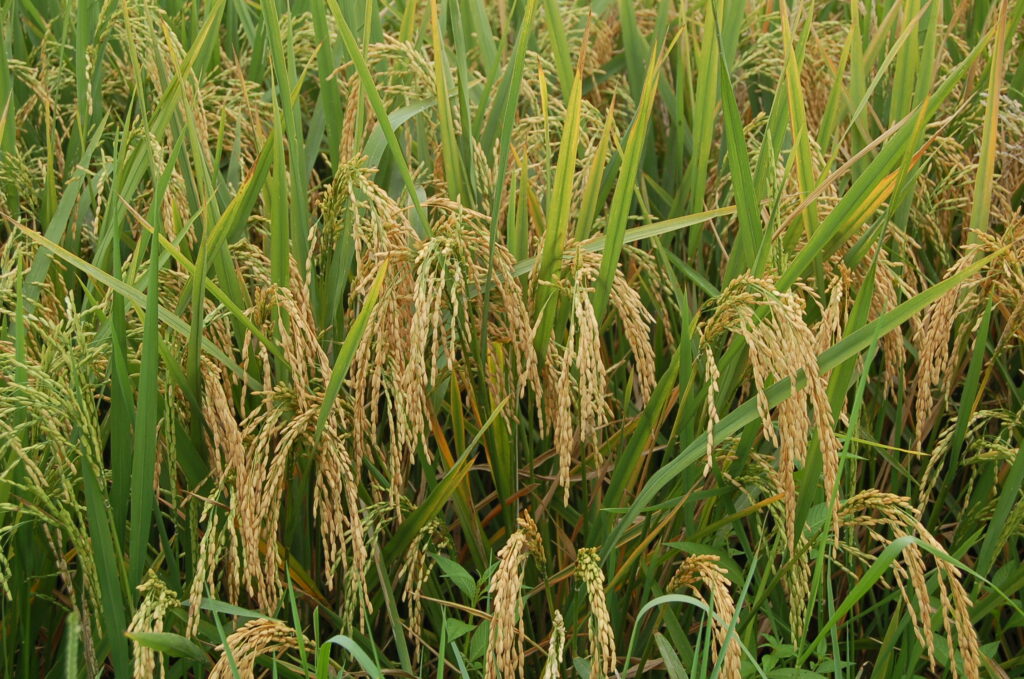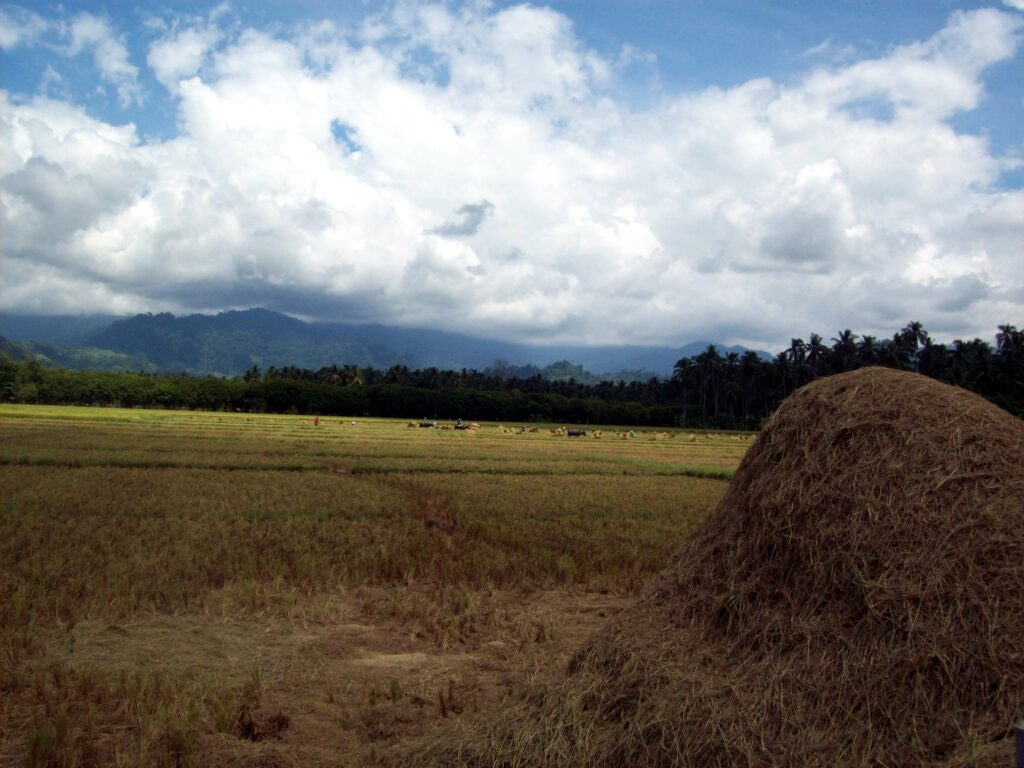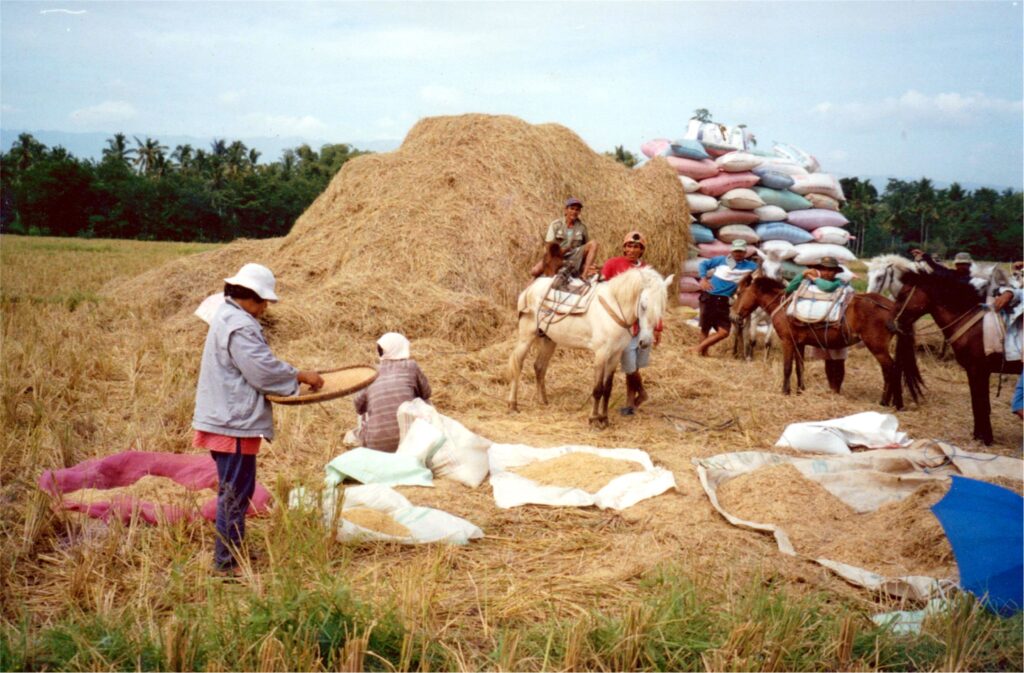Text and Photos by Henrylito D. Tacio
Most Filipinos may not be aware of it, but they are contributing to making the world getting warmer each year. Rice, the staple food which they eat every day, is among the major sources of methane released into the atmosphere.
The Nobel laureate Intergovernmental Panel on Climate Change (IPCC) considered methane as “one of the most potent greenhouse gases on Earth.” In fact, it is climate change’s second culprit – after carbon dioxide.
The Journal Science reported that the atmospheric concentration of methane has more than doubled during the last 300 years and is increasing at an annual rate of about 1% each year.
Methane is created naturally as a waste product of anaerobic bacteria (living with little or no oxygen). These bacteria produce methane gas in waterlogged soil and wetland, but also in human-produced environments such as rice paddies.
“An estimated 19 percent of world’s methane production comes from rice paddies,” admits Dr. Alan Teramura, a botany professor at the University of Maryland. “As populations increase in rice-growing areas, more rice – and more methane – are produced.”
“Rice is a plant that grows best in wet soil, with its roots flooded,” explains L. Hartwell Allen, an American soil scientist at the Crops Genetics and Environmental Research Unit in Gainesville, Florida. “But flooded rice crops emit substantial amounts of methane to the atmosphere.”

A study done by Philippine Rice Research Institute (PhilRice) said the burning of rice straw in farmers’ fields and incorporation of fresh rice straw just before land preparation are significant sources of greenhouse gases (GHGs) and other atmospheric pollutants according.
“Most paddy rice in the Philippines is still harvested manually,” said Cheryll C. Launio of PhilRice’s socioeconomics division. “Farmers cut the panicle portion of the rice, leaving around two-thirds of the plant as rice stubble in the round. The rice stubble is usually incorporated into the soil.”
The rice straw, which is produced when the harvested rice is threshed, is disposed of by burning, incorporation into the soil, and removal for animal feed.
Among the GHGs emitted from getting rid of rice straw and stubble are methane, carbon dioxide, carbon monoxide, u-burnt carbon, and other GHG pollutants. “While the carbon dioxide is reabsorbed in the next rice growing season, other GHGs may harm the environment,” Launio wrote in a policy briefing published by the Economy and Environment Program for Southeast Asia (EEPSEA).
Rice straw burning is also known to emit particulate matter and other chemicals such as dioxins and furans that have a negative impact on human health. Studies also show that rice straw burning causes a loss of major nutrients from the soil.
The EEPSEA briefing was based on the study, “Economic Analysis of Rice Straw Management Alternatives and Understanding Farmers’ Choices.” Launio headed the team, which was also composed of Constancio A. Asis, Jr., Rowena G. Manalili, and Evelyn F. Javier.

The study, using five-year average data on rice agriculture (from 2006-2010), took into account the emission caused by rice straw burning as well as those caused by the incorporation of straw and stubble into wet soil during ploughing.
Results of the study showed management and disposal of rice stubbled contributed around 16 million tons of carbon dioxide equivalent emissions in 2008. Approximately, the figure is 8% of the total projected carbon dioxide equivalent emissions for 2008 based on the country’s first initial national communication on climate change.
The study also found that incorporating rice stubble less than 30 days before crop establishment “appeared to be responsible for the largest contribution of GHG emissions.”
“When the different management options were assessed using a five-year scenario, we found that incorporating composted rice straw into the field yielded the lowest cumulative levels of methane and nitrous oxide emissions,” Launio wrote.
Simply shifting from the baseline approach of late stubble incorporation and straw burning too early incorporation of both stubble and straw also gave good results and led to reductions in GHG emissions of around 80%. “This was mainly due to reductions in methane emissions,” Launio pointed out.

The researchers conclusion: “Shifting from rice straw burning to rice straw incorporation will not necessarily reduce global warming potential if straw is incorporated less than 30 days before cultivation, especially in flooded conditions.”
Meanwhile, Laguna-based International Rice Research Institute (IRRI) urged Filipino farmers to adopt controlled irrigation or alternate wetting and drying (AWD) technology when growing rice on their farms.
AWD is a technology that allowed rice fields to dry for a certain period before applying irrigation water. Also called controlled irrigation or intermittent irrigation, AWD technology can actually save farmers almost one-third of irrigation water without sacrificing yields. It also saves farm inputs like oil, fuel, and labor being utilized on the operation of water pumps.
Rice fields using this technology are alternately flooded and dried. The number of days of non-flooded soil can vary from one day to more than ten days, according to IRRI. It uses an “observation well” that is made of bamboo, plastic pipes, or any hollow indigenous material. Perforations are made in the lower half of the tube.
The AWD technology can be started a few days after transplanting (or with a 10-centimeter tall crop in direct seeding). When many weeds are present, AWD can be postponed for 2-3 weeks until weeds have been suppressed by the ponded water. Local fertilizer recommendations as for flooded rice can be used. Nitrogen fertilizer may be applied preferably on the dry soil just before irrigation.
“A practical way to implement AWD technology is by monitoring the depth of the water table in the field using a simple perforated field water tube,” IRRI explains. “When the water level is 15 centimeters below the surface of the soil, it is time to flood the soil to a depth of around 5 centimeters at the time of flowering, from one week before to one week after the maximum flowering.”
The water in the rice field is kept at 5 centimeters depth to avoid any water stress that would result in severe loss in rice grain yield. The threshold of water level at 15centimeters is called “safe AWD,” as this will not cause any yield decline because the roots of the rice plants are still able to take up water from the saturated soil and move it to the root zone.
“The field water tube used in this technology will help to measure the water level in the field so that incipient water stress in the rice plants can be anticipated,” the IRRI points out. As such, the AWD technology does not only save water but can greatly reduce emissions of methane.
Studies conducted at the IRRI have shown that AWD technology reduces methane emissions by about 30% or even up to 70%, depending on water usage and management of rice stubble.

